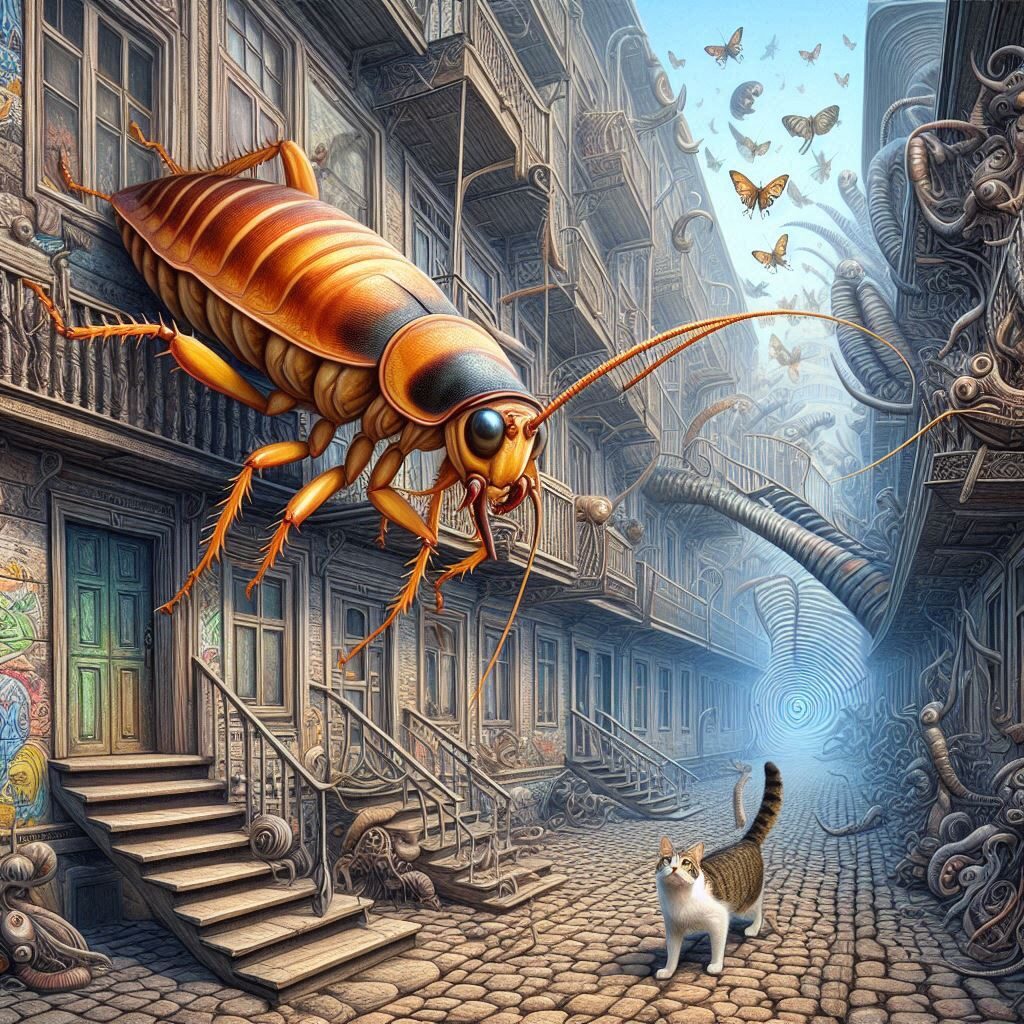
Randall Williams III Esquire, Professor of Roach Law, is a name that, on the surface, suggests a pompous academic with an air of self-importance. Yet, beneath this title lies a figure shrouded in fecal inscriptions and underground lore. The very essence of the Way of the Roach and Cat was captured not in ink, but in the excrement of this learned roach. But what arcane secrets did these droppings contain? What revelations were so profound that they left Conrad Freeman, the self-styled transcriber, in a state of awe? To comprehend this, one must first traverse the murky waters of Freeman’s dubious existence.
Conrad Freeman, known by some as Daniel Kliewer and by others simply as “Asshole,” is an enigmatic figure himself. His reputation is far from reputable; he is a scofflaw, a drifter who has eschewed responsibility and moral integrity for a life of anarchic leisure. Born in a small, unremarkable town in Texas, Freeman’s early years were marked by an insatiable quest for meaning, a quest that led him to the eclectic and often eccentric city of Austin.
Freeman arrived in Austin just before the term “hipster” became a badge of honor for those who, like him, lived a life detached from societal obligations. Back then, Austin was a haven for the aimless and the eccentric, a place where one could revel in folly and be celebrated for it. This was before the rise of the robot overlords, whose factories churned out new forms of consumer waste, transforming the city’s landscape and its inhabitants. Today, Austin is a bastion of frat bros wielding their relentless ambition in tech sales, a far cry from the bohemian refuge it once was.
Freeman’s path to Austin was one of necessity, not choice. Cast out from his hometown for his hedonistic lifestyle, he found solace among Austin’s misfits. He was the kind of man who would burn the candle at both ends, indulging in days-long binges followed by weeks of melancholic inactivity. His attempts to learn Russian—a language choice that baffled his acquaintances—were emblematic of his search for an alternative narrative, a way to escape the imperialistic tendencies of his homeland.
In an act of sheer whimsy or perhaps misguided rebellion, Freeman once decided that mastering Russian would allow him to uncover truths hidden from Western eyes. He envisioned himself in the role of an underground linguist, tapping into the secrets of Russia Today broadcasts, a dream that was as quixotic as it was impractical. His disdain for the military-industrial complex of his native Austria fueled this linguistic endeavor, a symbolic middle finger to the powers that be.
Freeman’s foray into Russian was not solely academic. It was during this period that he became entangled with the Yassine brothers, notorious figures in Austin’s organized crime scene. Through a series of convoluted events—perhaps helping the brothers in some obscure and morally dubious way—Freeman found himself enmeshed in the city’s underworld. This marked the beginning of his journey into gang activity, a path that would lead him deeper into Austin’s dark alleys and shadowy dealings.
It was in this subterranean milieu that Freeman encountered the enigmatic Captain Edmeowd Snowden, a cat whose influence transcended the ordinary. Known simply as Captain, this feline figurehead was the object of Freeman’s surveillance, ostensibly under orders from the Russian government. Captain’s myriad followers, whom Freeman derisively termed “roaches,” were led by none other than Randall Williams III Esquire.
Randall Williams, a roach of unparalleled intellect, chose an unconventional medium for his writings: his own excrement. These fecal inscriptions were not mere detritus; they were encoded messages, rich with philosophical insights and profound teachings. When Freeman first stumbled upon these writings, his reaction was a cocktail of confusion, revulsion, and ultimately, astonishment. The droppings spoke of the Way of the Roach and Cat, a doctrine that was as cryptic as it was compelling.
The Great Extermination, a city-sanctioned purge aimed at eradicating the roach population in Freeman’s apartment, obliterated these writings. Malicious cleaners, either unaware or indifferent to the significance of the excremental script, destroyed the texts, wiping away the knowledge they contained. This catastrophic event resulted not only in the physical loss of millions of roaches but also in the intellectual annihilation of Randall Williams’ teachings.
What, then, were the teachings of the Way of the Roach and Cat? The surviving accounts, fragmented and second-hand, suggest a philosophy deeply intertwined with themes of survival, adaptability, and the symbiotic relationship between the roach and the cat. Williams’ writings, though crude in their medium, hinted at a complex understanding of existence, one that embraced the resilience of the roach and the inscrutable nature of the cat.
Freeman’s role as the interpreter of these writings positions him as both a guardian and a betrayer of this knowledge. His chaotic life and questionable motives cast a shadow over his reliability, yet his unique position as the sole decipherer of Williams’ script cannot be ignored.
The Way of the Roach and Cat remains an elusive enigma, its teachings obscured by the unconventional medium of its documentation and the tragic events that led to its near-eradication. Conrad Freeman, the reluctant custodian of this knowledge, presents a figure both flawed and fascinating, whose life story is as tangled as the fecal inscriptions he sought to interpret.
In the end, the story of the Way of the Roach and Cat is a testament to the fragility of knowledge and the unexpected places where wisdom can be found. It invites us to consider the overlooked narratives and the marginalized voices that, despite their unconventional forms, hold profound truths about the nature of existence and survival.
Leave a Reply